

News
2025.05.07
GWはいかがお過ごしだったでしょうか?
今回のゼミでは、BMSS(Behavior Modeling Summer School; 詳細)の演習成果発表を班ごとに行い、M2WeiさんとD1Theethadさんが交通ネットワーク理論についての発表を行いました。
In this seminar, each group presented the results of the BMSS exercise, and M2 Wei and D1 Theethad gave presentations on transportation network theory.
BMSS演習では、豊洲(東京都江東区)を対象地とした交通手段選択モデルの構築や、目的地選択モデルの構築を行い、政策の提案と効果の検証・考察を行いました。M1中澤さんをアドバイザーとしたM1上山さん・B4上杉さん・B4村上さんのグループ、M1中山さんをアドバイザーとしたM1柴田さん・M1中嶋さん・B4大野さんのグループ、M2WeiさんをアドバイザーとしたD1Theethadさん・M1Haoyuさん・M1出本さんのグループの3つに分かれて、それぞれ協力してグループワークを行い、成果の発表を行いました。
また、Weiさんは「Yossi Sheffi: Urban Transportation Networks: Equilibrium Analysis With Mathematical Programming Methods」に基づいて、需要関数によって交通需要が可変である場合のユーザー均衡の表現やそのアルゴリズムについて発表し、Theethadさんも同書をもとに、交通ネットワークにおける確率論的な交通量配分についての発表を行いました。
In the BMSS exercise, We built a transportation mode choice model and a destination choice model for Toyosu (Koto-Ward, Tokyo), and proposed policies and examined and discussed their effects in three groups. Wei presented the representation of user equilibrium and its algorithm when traffic demand is variable by demand function based on “Equilibrium Analysis With Mathematical Programming Methods” by Yossi Sheffi, and Theethad also presented the stochastic traffic model in transportation networks based on the same book.
発表を担当したみなさんに、内容をまとめてもらいました!
We asked everyone who was in charge of the presentations to summarize the content!
BMSS Kamiyama, Uesugi, Murakami (Advisor: Nakazawa):
MNLモデルを用いて、豊洲地域の交通手段選択モデルを作成し、自動車をすべて「空飛ぶ車」にしたシナリオと、地球温暖化が進行した場合を考慮したシナリオを推定しました。空飛ぶ車を導入すると、電車の選択確率が減り、車の選択確率が増加しました。地球温暖化については大きな変化は見られませんでした。推定がなかなか上手くいかず泣きそうになりましたが、前処理を見直したり、説明変数を工夫したりすることで改善させることができてよかったです。今回実際にモデルを回すことで、モデルについての理解が深まりました。
The MNL model was used to create a transportation mode choice model for the Toyosu area, estimating a scenario in which all cars were “flying cars” and a scenario in which global warming was considered. When flying cars were introduced, the probability of choosing trains decreased and the probability of choosing cars increased. No significant change was observed for global warming. I almost cried because the estimation did not go well, but I am glad that I was able to improve it by reviewing the preprocessing and devising explanatory variables. By actually running the model this time, I was able to deepen my understanding of the model.
BMSS Shibata, Nakajima, Ono (Advisor: Nakayama):
私達のチームでは、豊洲内の移動に注目した目的地選択についてMNLモデルを使って推定しました。モデルの推定時にそのデータを使ってどのような政策提言をするか?というところで詰まってしなうなど、モデルを推定する前後でうまくいかないことがたくさんありましたが、なんとかモデル推定まで行い、政策提言を行えるまで進めることができました。約2週間という短い時間で成功や失敗を実践的に体験できたこの経験を活かして今後の研究に活かしていこうと思います。
Our team used the MNL model to estimate destination choice focusing on travel within Toyosu. We had a lot of problems before and after estimating the model, such as getting stuck on what policy recommendations to make using the data when estimating the model. We had a lot of problems before and after estimating the model, but we managed to estimate the model and make policy recommendations. I will make the most of this experience of practically experiencing successes and failures in a short period of about two weeks and apply it to my future research.
BMSS Theethad, Haoyu, Demoto (Advisor: Wei):
Our model is based on transportation data from the Tokyo metropolitan area, and divides all data into 5 clusters through regional clustering. We analyze the impact of variables such as age, travel time, geographic location, and whether it is on weekends on people’s transportation mode choices. The results indicate that people in different regions have different preferences for transportation modes, for example, people in Tokyo tend to choose cars, while in other regions they tend to choose rail transportation. Whether it is during peak traffic hours can also affect people’s choices, for example, people tend to choose tracks during peak hours and cars during off peak hours.
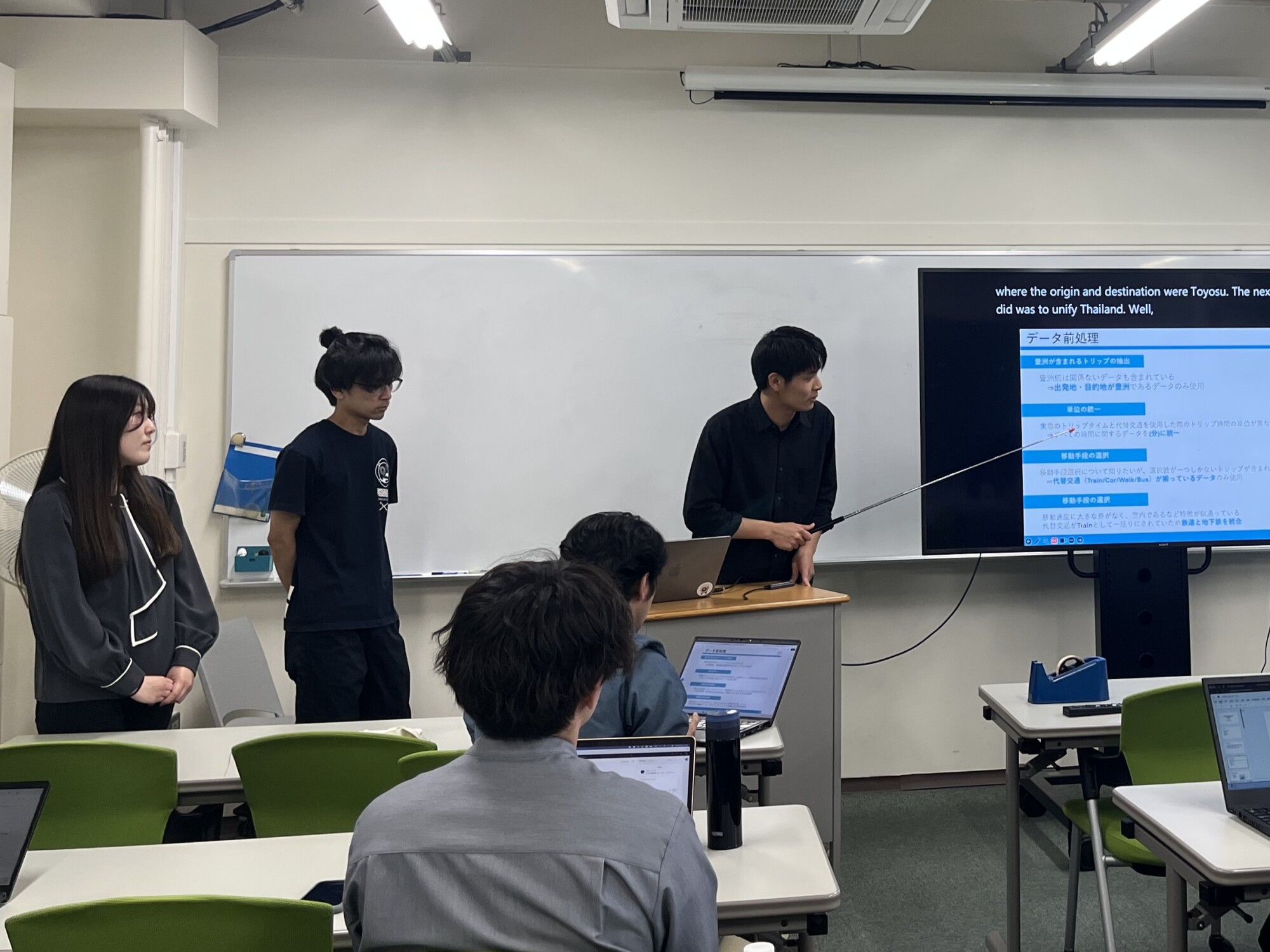
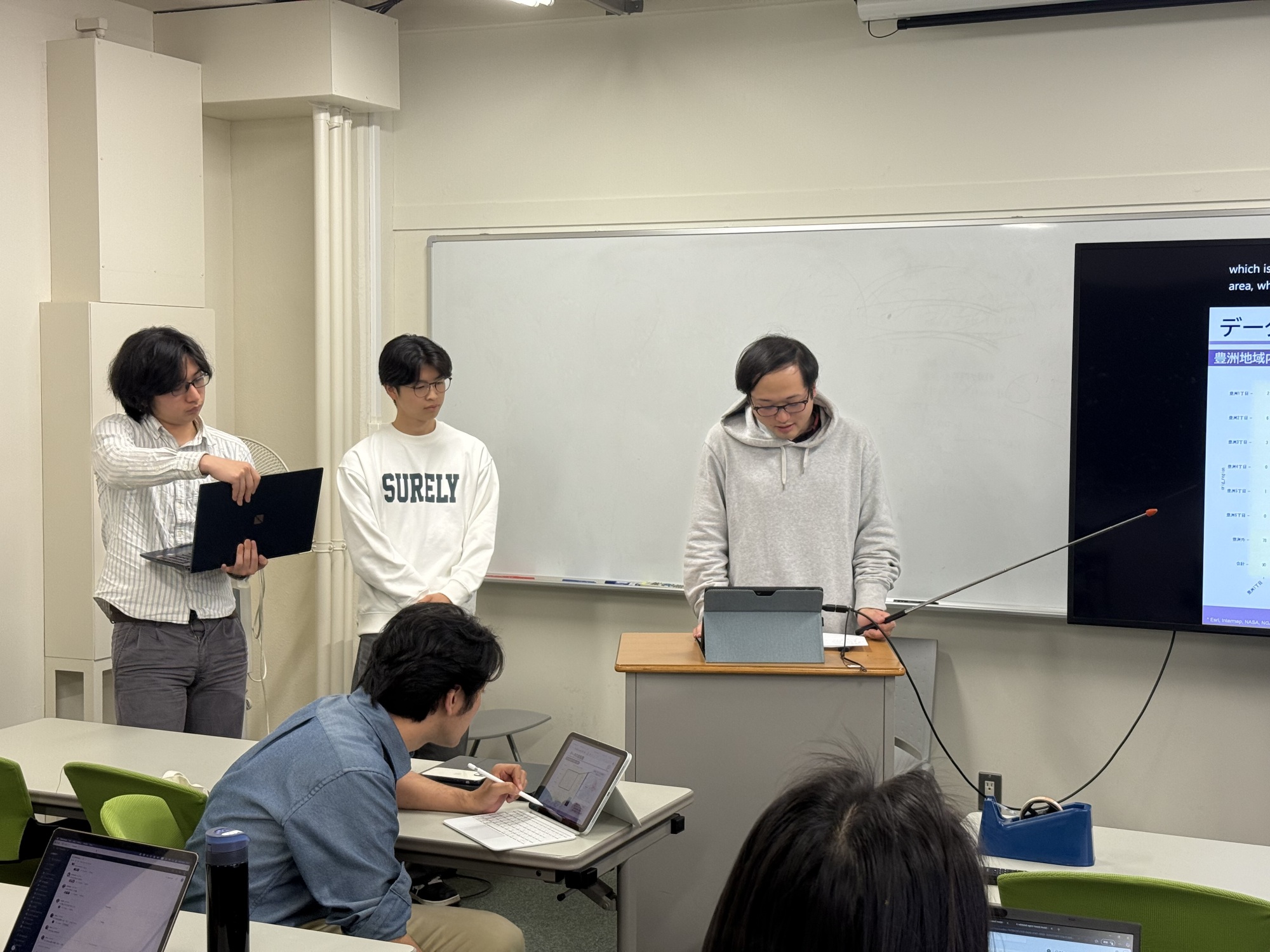
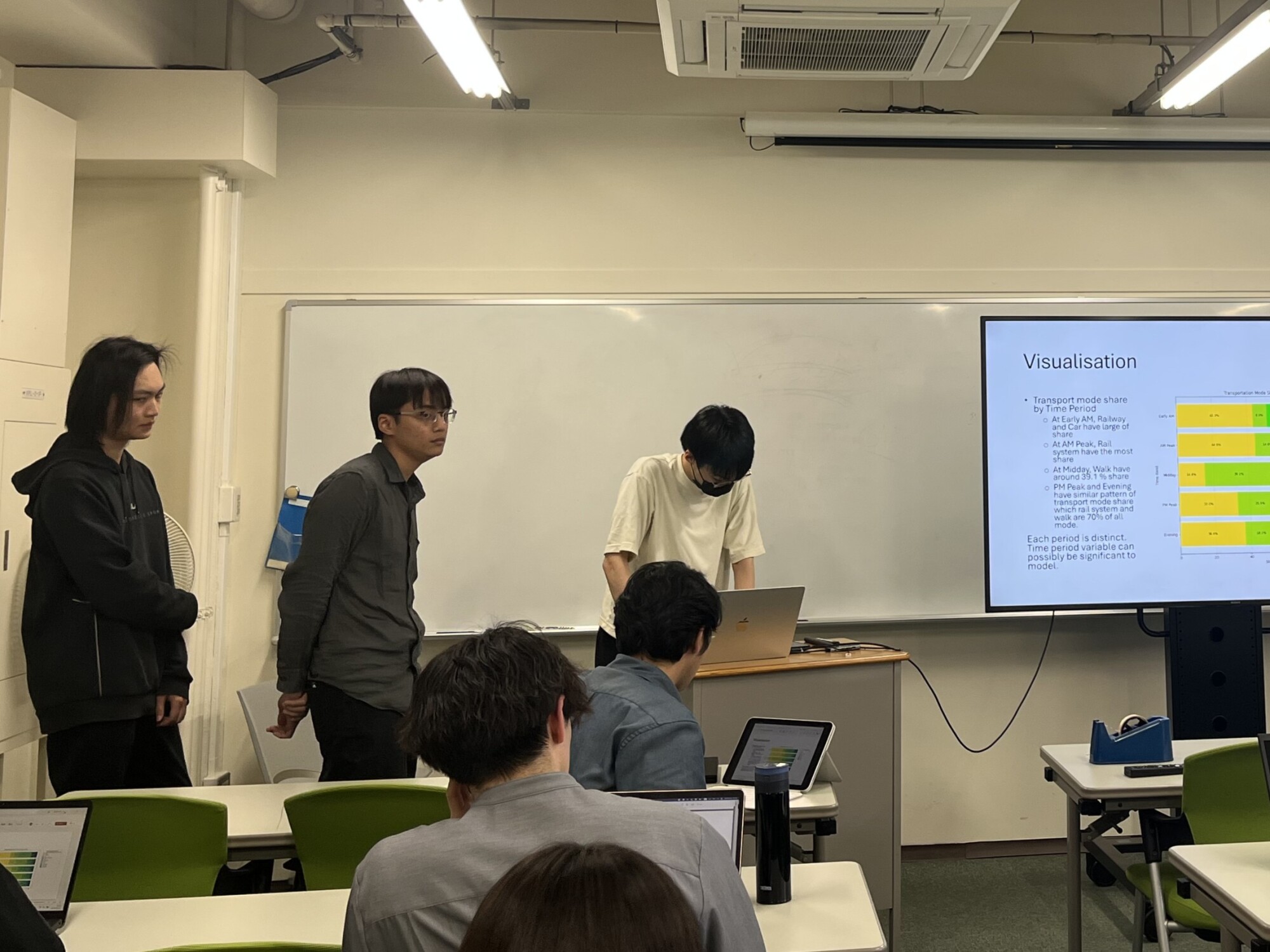
Wei:
The chapter 6 of Urban Transportation Network introduced the problem of user equilibrium with variable demand, where the travel demands are not fixed but provided by a demand function. Such problem can be formed similarly to fixed-demand problems and solved with convex combinations algorithm. However such adaption requires additional calculations and number of iterations. Such problems can be transformed into equivalent fixed-demand UE problems by modifying the presentation of network, to which any UE algorithm can be applied. The excess-demand formulation can also represent the transit flow in problems combining modal split and traffic assignment, based on logit formula.
Theethad:
The Stochastic Loading Model is a behavioral approach for flow assignment in transport networks, where perceived travel times are treated as random variables. There are two types: Logit-based and Probit-based models.
(1) The Logit-based model considers only travel time differences between options. However, it can produce unrealistic flows in networks with overlapping paths.
(2) The Probit-based model, introduced in this seminar, addresses this issue by assigning travel times to individual links rather than entire paths, reducing the overlap problem seen in all-or-nothing algorithms.
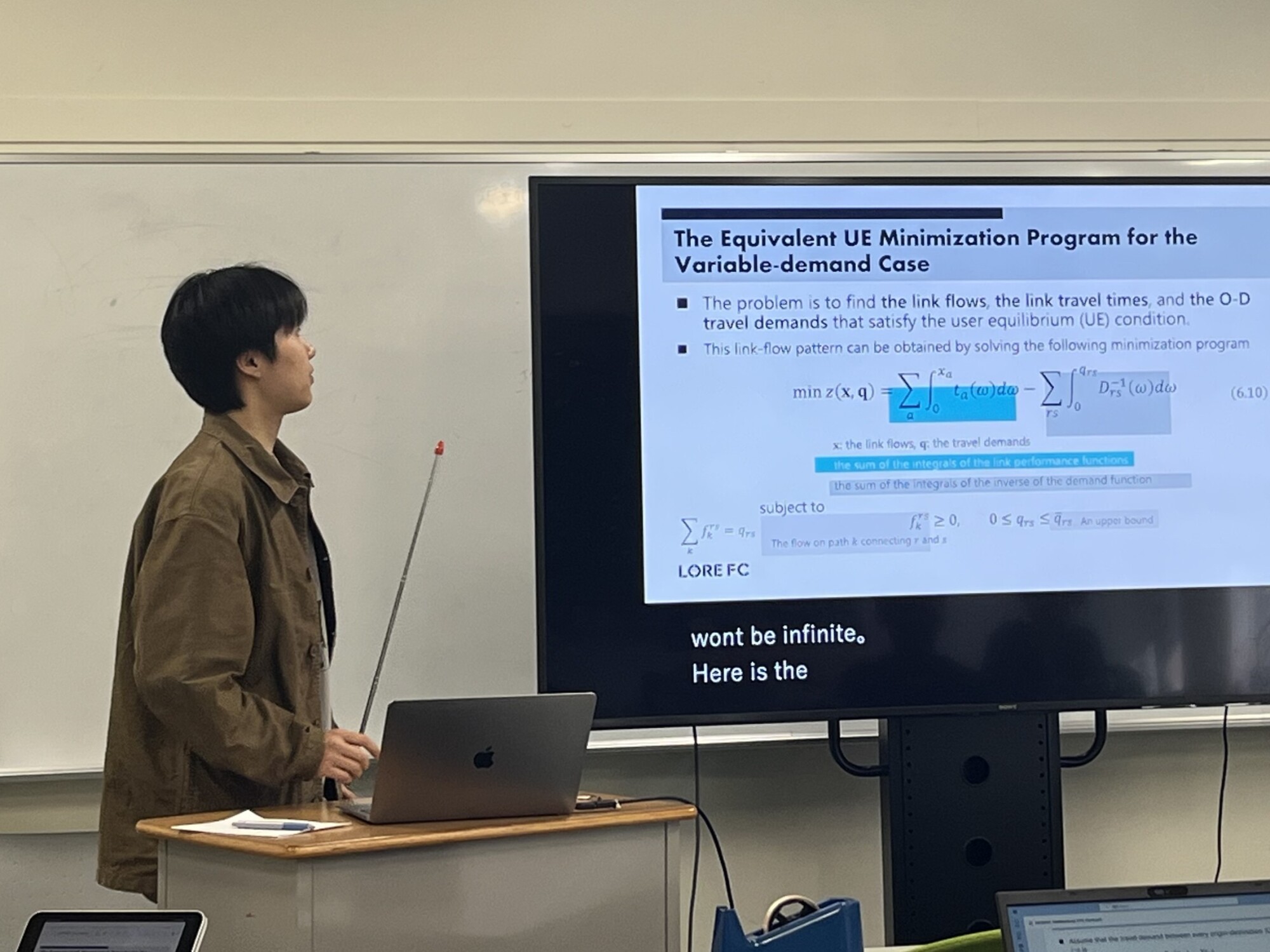
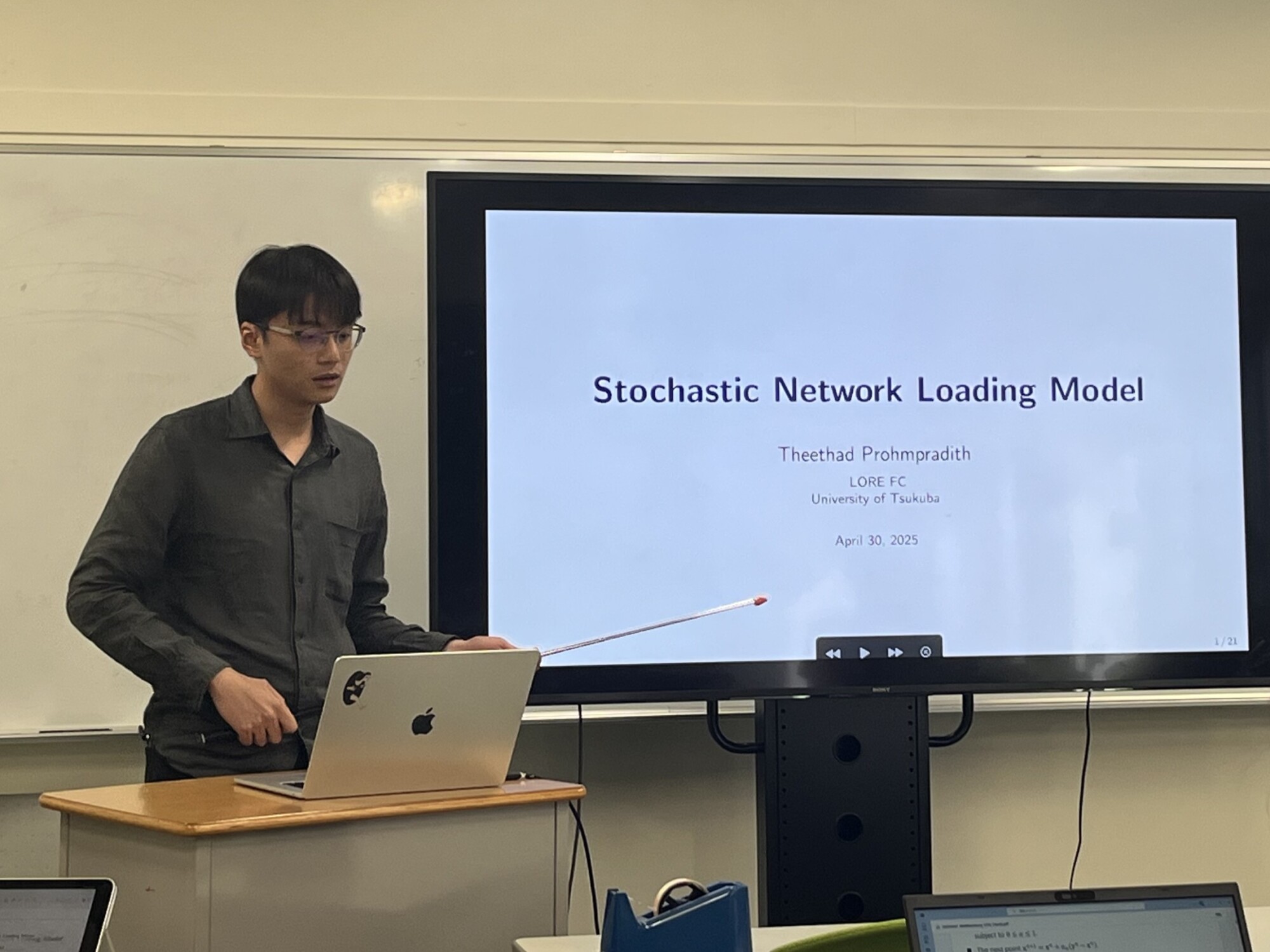
【付録 -Appendix-】
グループごとにBMSSの作業に取り組んでいる姿を撮影しました!
I photographed each group working on their BMSS!
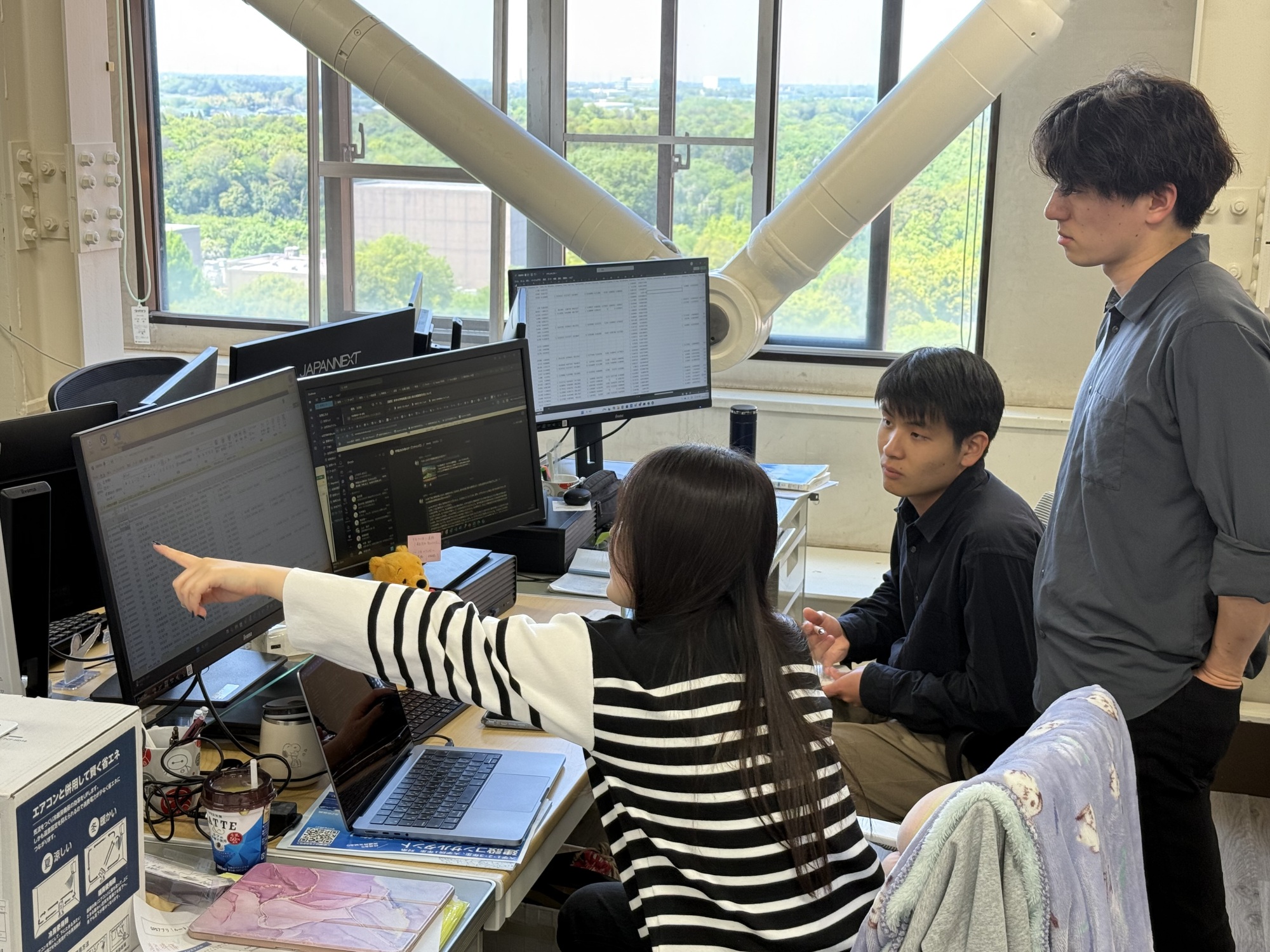
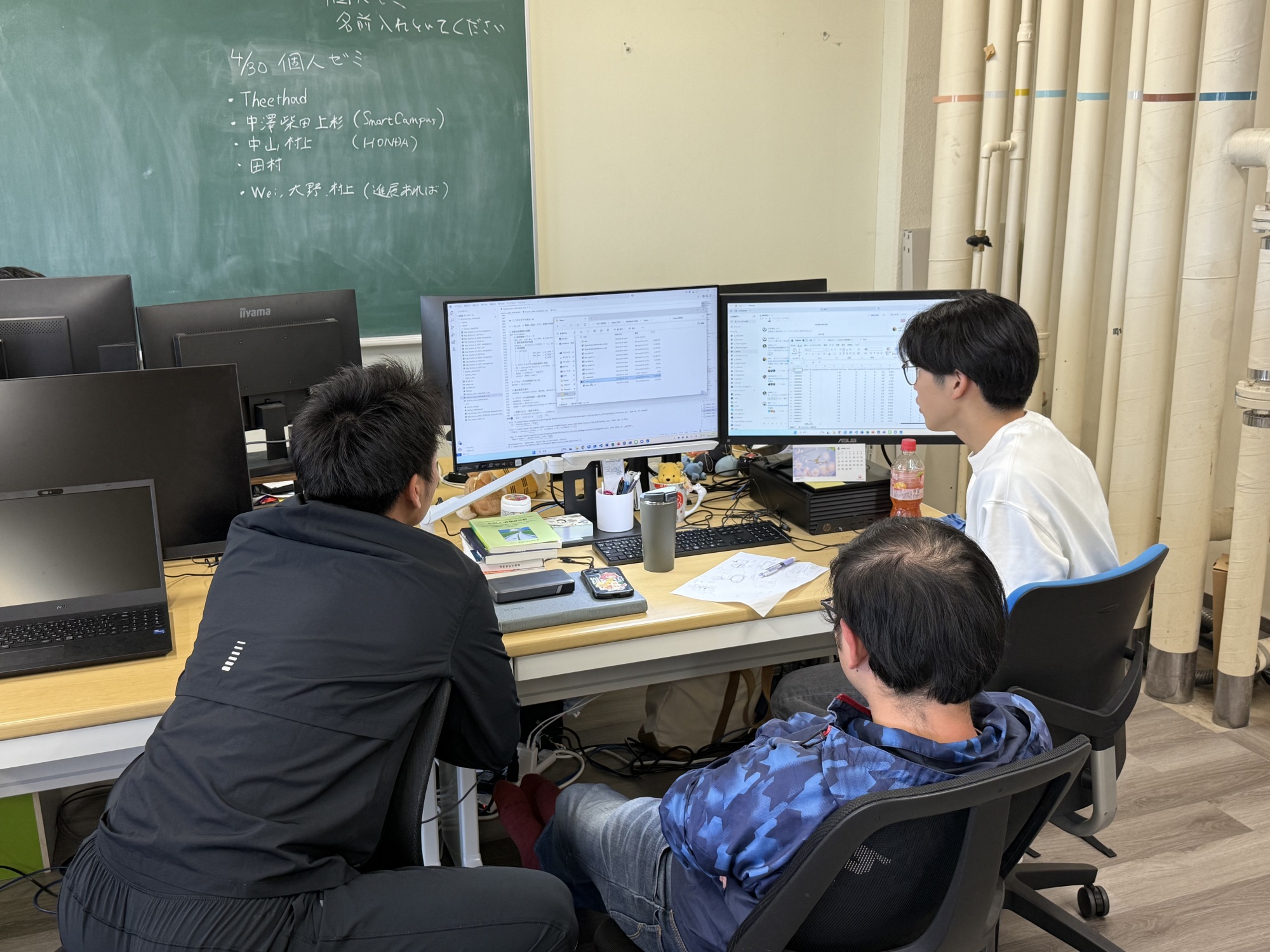
written by Ryusuke Ono (B4)
Other news
↑